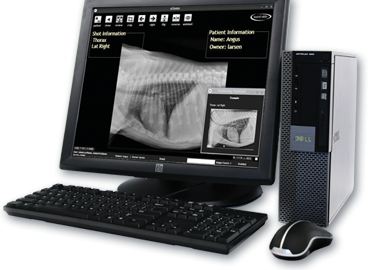Chocolate poisoning is a common problem in dogs, especially around the holidays when there may be more opportunities for dogs to have access to chocolate. While rarely fatal, chocolate ingestion often results in significant illness. The toxic ingredient in chocolate is theobromine, which is similar to caffeine. Dogs are much more sensitive to theobromine than humans are, therefore relatively small amounts of chocolate can cause toxicity. Symptoms of theobromine poisoning include vomiting, diarrhea, hyperactivity, abnormal gait and increased urination. More severe cases exhibit muscle tremors, convulsions and coma.
The amount of toxic theobromine present varies by the type of chocolate. In general, the darker and the more bitter the chocolate, the more dangerous it is to your pets. Cooking or baking chocolate and dark chocolate contain the largest amount of theobromine. White chocolate contains very little theobromine and would be less likely to cause toxicity in dogs.
If you suspect that your dog may have chocolate poisoning, transport him or her to your veterinarian immediately. Even if your dog is acting normally, but you know it has eaten a significant amount of chocolate, you should still see your veterinarian as soon as possible. The sooner the theobromine is removed from the body and the pet is stabilized, the better your dog’s prognosis.
Treatment depends on the amount and type of chocolate eaten. If treated early, removal of the chocolate from the stomach by administering medications to induce vomiting and administration of activated charcoal to block absorption of theobromine into the body may be all that is necessary. More severe cases may require hospitalization and intravenous fluid therapy to help dilute the toxin and promote its excretion.






